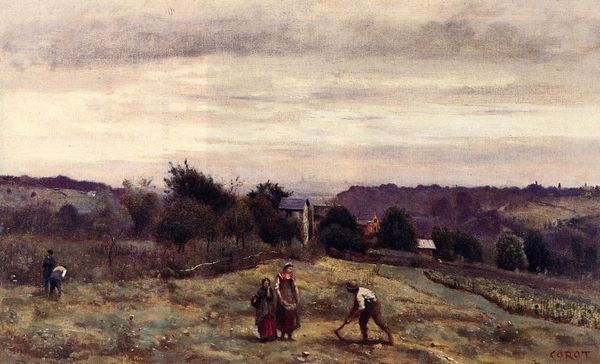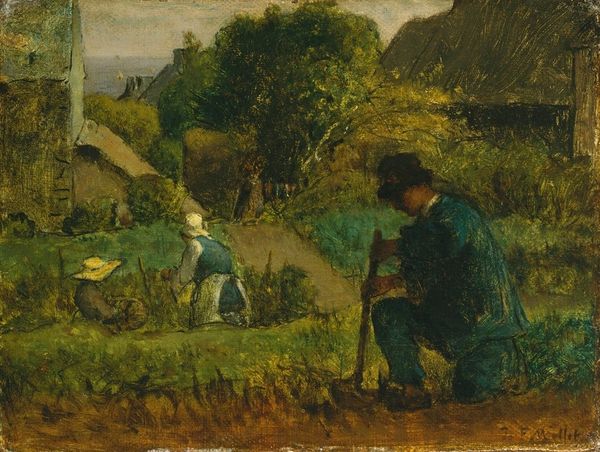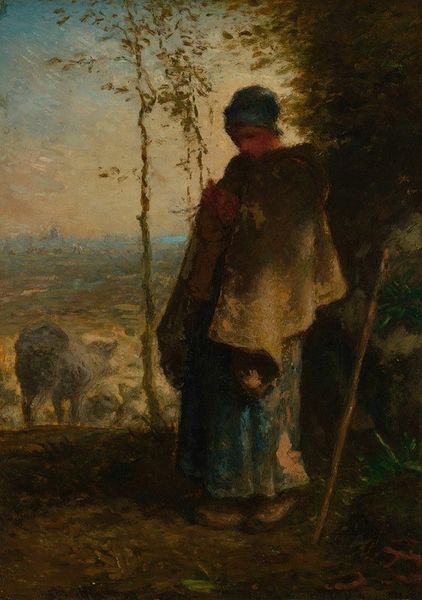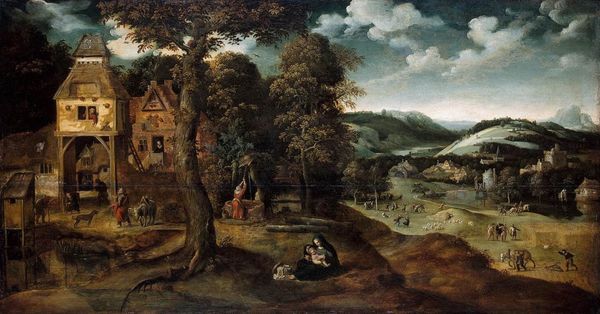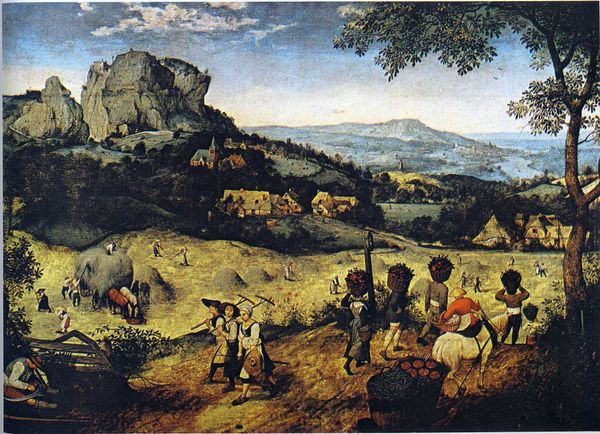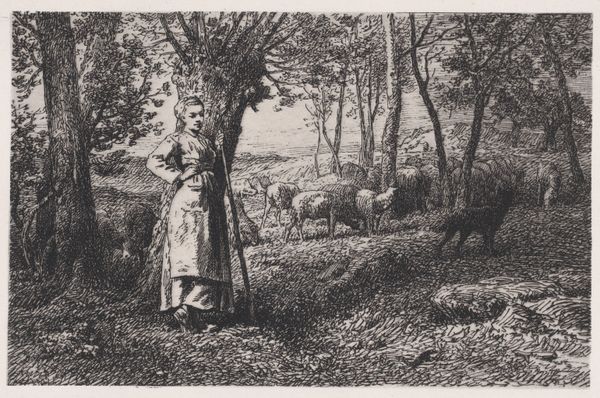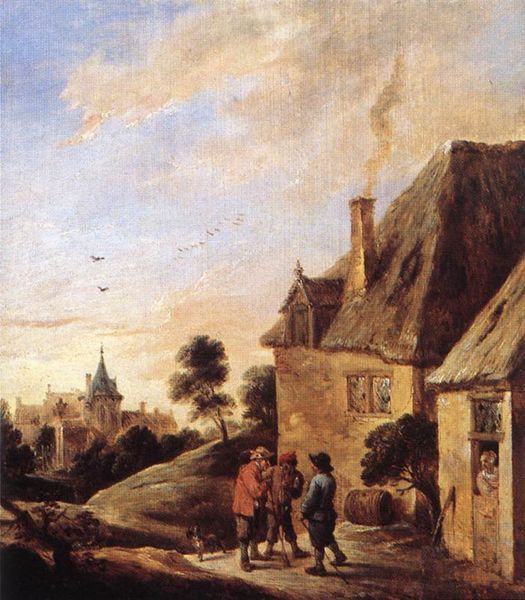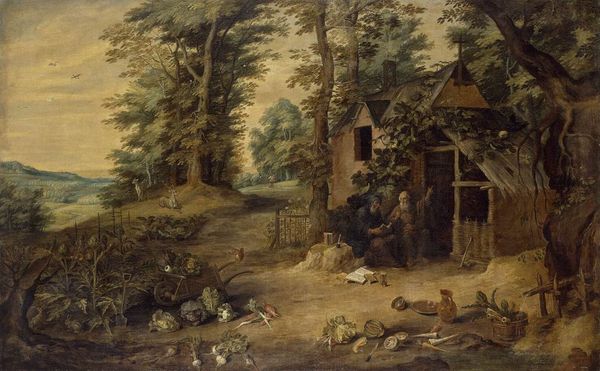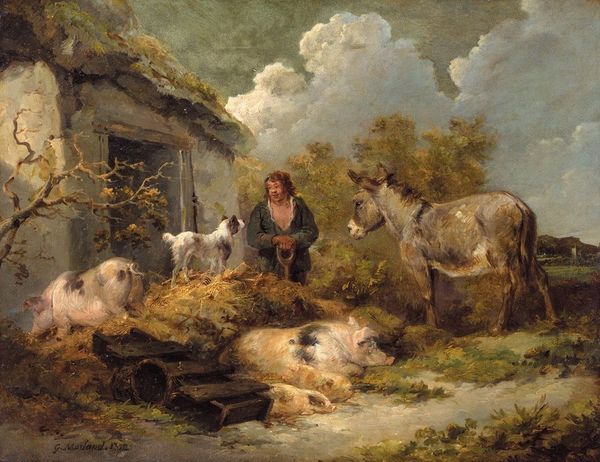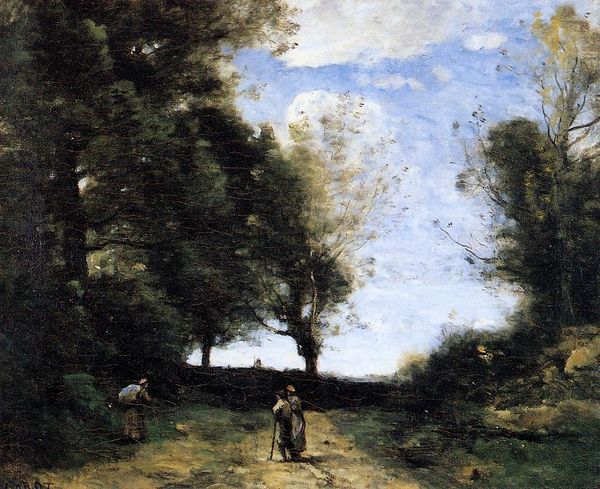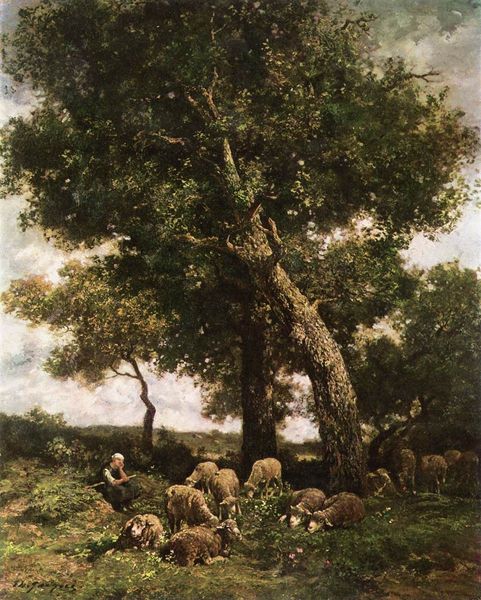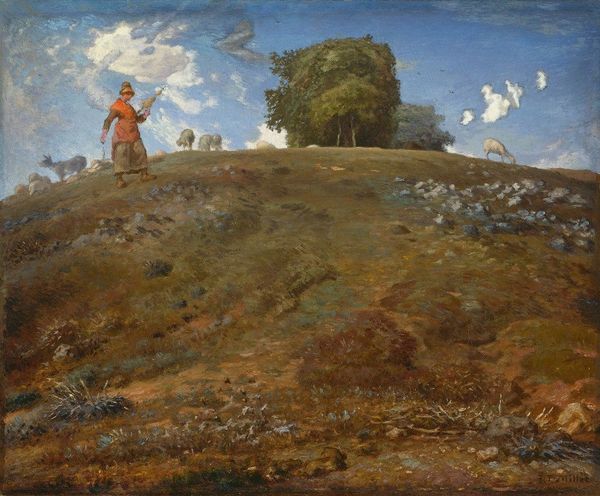
painting, plein-air, oil-paint
#
painting
#
plein-air
#
oil-paint
#
landscape
#
charcoal drawing
#
oil painting
#
romanticism
#
watercolor
#
realism
Dimensions: 31 x 59 cm
Copyright: Public domain
Curator: Examining Camille Corot's 1842 oil painting, Saint Andre en Morvan, we are presented with a fascinating study in composition and light. Editor: It feels like a stage. That subdued palette and those figures frozen in the foreground give a distinct sense of…performance. Is that overly sentimental? Curator: Not at all. Note the careful arrangement of forms – the central tree, the ascending plane leading to the village, all framing those figures you mentioned. Corot employs a visual syntax deliberately. The structure supports your feeling; it is a structured vision. Editor: But what about Corot’s own structures? I’m struck by the tangible quality of the oil paint itself. The impasto of the foliage against the smoother textures in the sky hint at different methods and mark-making to achieve the texture of light. What were Corot's working conditions at the time and how might his supplies impacted the landscape art creation? Curator: Intriguing point! The way the medium is used does evoke particular effects. Beyond materiality, I want to examine the Romantic underpinnings; those tiny figures become subsumed in nature's grandeur, the church suggesting something permanent amidst nature's beauty. The whole of this semiotic language produces a discourse regarding romanticisim. Editor: That's not contradictory if you see the hand of labor embedded in it. Corot isn't just conveying symbolic ideas, it suggests a place and real work, doesn't it? You can trace that in the handling of his materials. Consider these subdued colours... they give hints about nature in that area of the world but it also may be linked with the types of pigment or colors Corot have had available in that historical moment to represent reality with those features. Curator: Your perspective has shifted my gaze toward the social context and working processes which informed the artist in the act of painting. The surface acts as more than a purely optical vehicle in its construction and Corot delivers this perfectly. Editor: Yes, definitely the materiality shapes what we see and how we experience landscape, both in paint and beyond! It’s good to question established readings by just looking to the ways landscapes have been shaped.
Comments
No comments
Be the first to comment and join the conversation on the ultimate creative platform.
